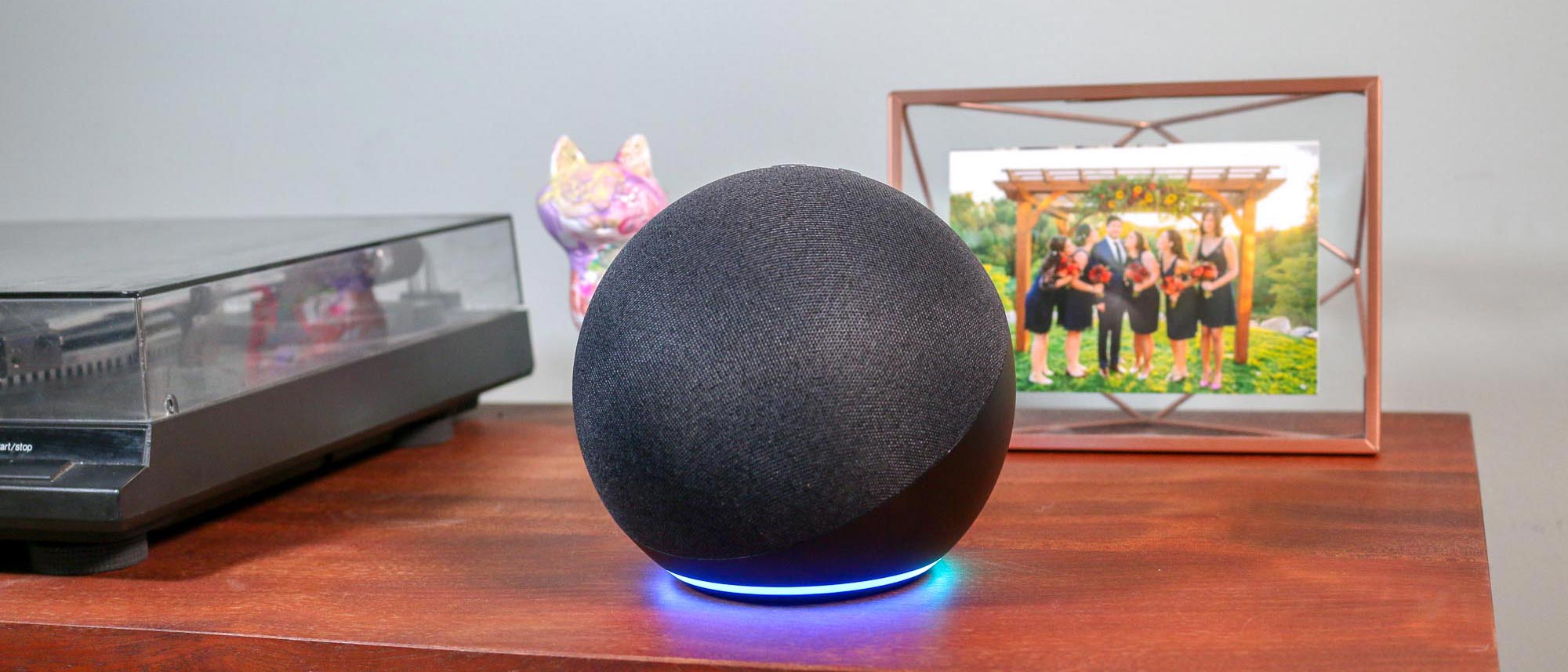Tom's Guide Verdict
The 4th-gen Amazon Echo is the most well-rounded smart speaker.
Pros
- +
Sleek spherical design
- +
Good audio for price
- +
Great smart home skills
- +
Audio in/out port
Cons
- -
I wish it had a clock
- -
Audio not as good as Sonos One
Why you can trust Tom's Guide
Audio: One 3-inch woofer, two 0.8-inch tweeters
Wi-Fi: 802.11a/b/g/n/ac (2.4 and 5 GHz)
Wireless: Bluetooth, Zigbee, Sidewalk
Ports: Power, 3.5mm audio in/out
Size: 5.7 x 5.7 x 5.2 inches
Weight: 34.2 ounces
The 4th-generation Amazon Echo’s spherical design marks a serious visual redesign — long gone is the tall cylinder shape of previous models. Still, it’s what inside the Echo that makes it one of the best smart speakers you can buy today.
Amazon has granted sound quality a noticeable upgrade, and that’s just one of a host of other features that combine to make this one of the finest smart home devices of its kind. Is it worth adding to your own home? Keep reading our Amazon Echo review to find out.
- Our picks of the best waterproof speakers
- More of the best Bluetooth speakers
Amazon Echo review: Price and availability
The Amazon Echo (4th gen) went on sale October 22 for $99. It’s available in three colors: Charcoal, glacier white, and twilight blue.
You can pick one up from Best Buy or Amazon, the latter of which has more color options available. These include Charcoal, Glacier White, (Product)Red and Twilight Blue.
Amazon Echo review: Design
For 2020, Amazon ditched the cylindrical design of its older Echo smart speakers for a spherical shape that is not only more interesting to look at, but allowed the company to cram in an additional tweeter.
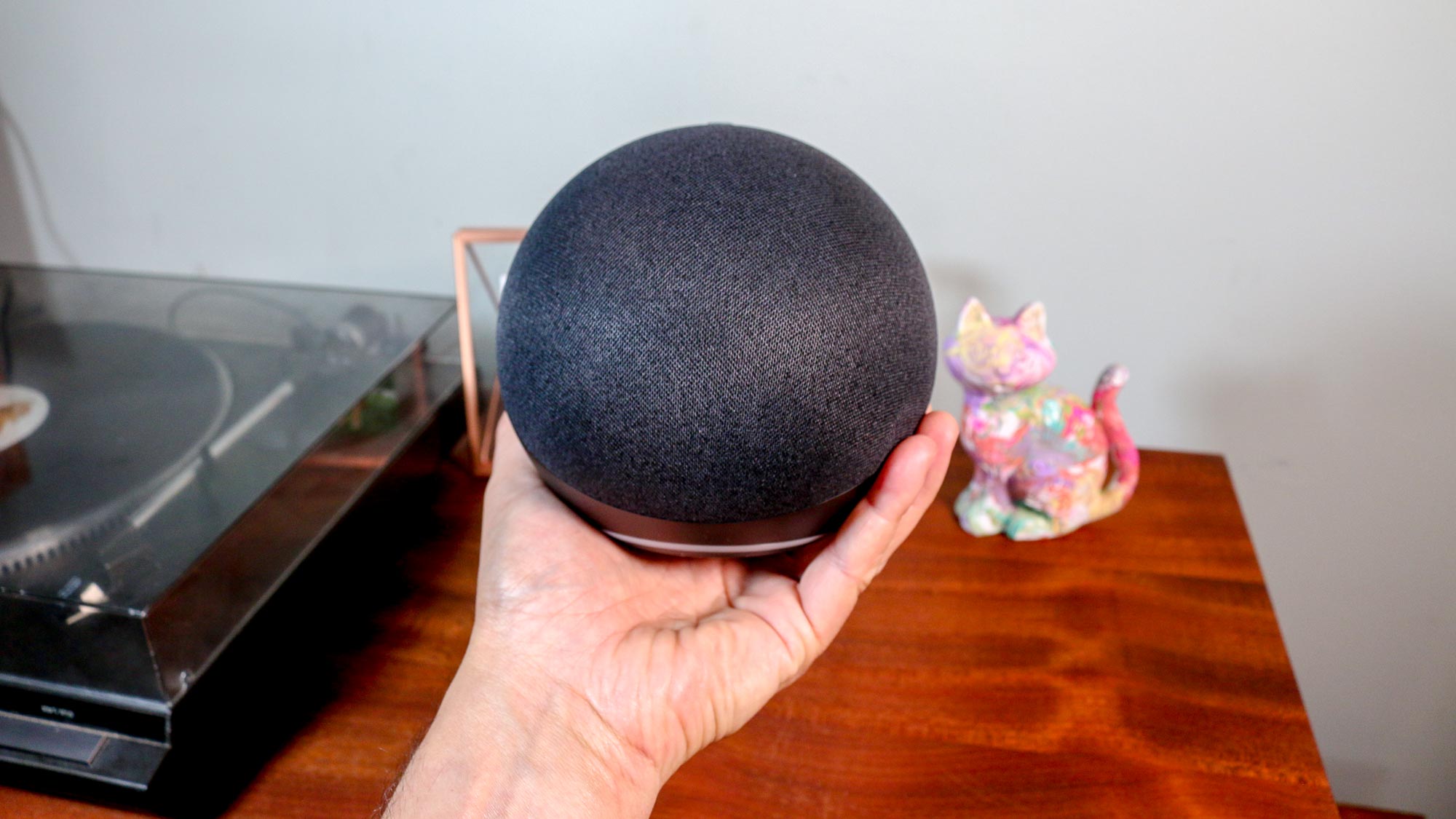
Looks-wise, the 4th-generation Echo is essentially a puffed-up Echo Dot. But, where I wasn’t as onboard with the spherical design of the Echo Dot, I think it makes more sense with the full-size Echo, which is meant to be seen in a more prominent place.
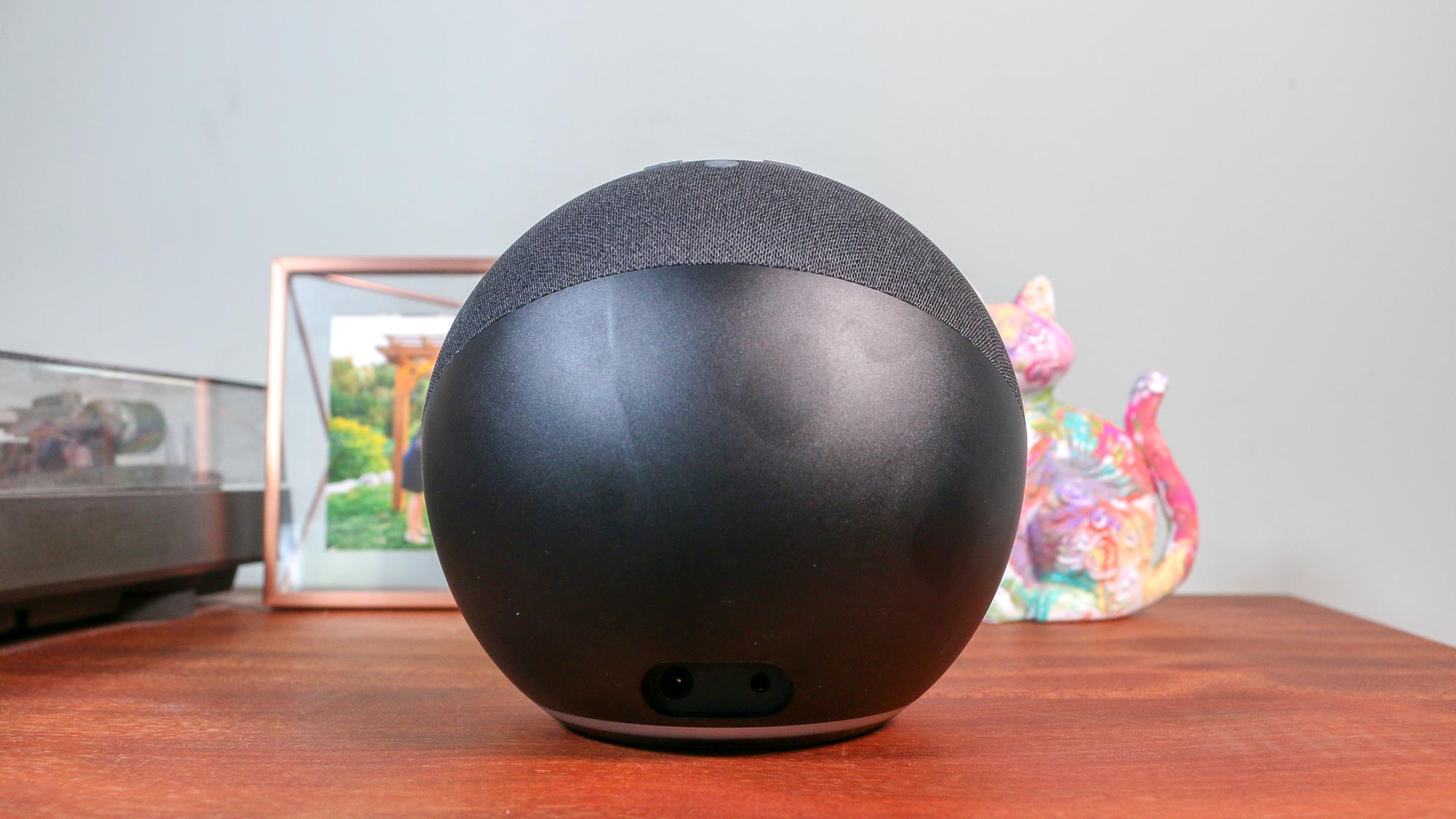
When looking at the Echo from the front, you see its large fabric-covered grille, but as you turn it towards the back, a hard plastic shell takes over.
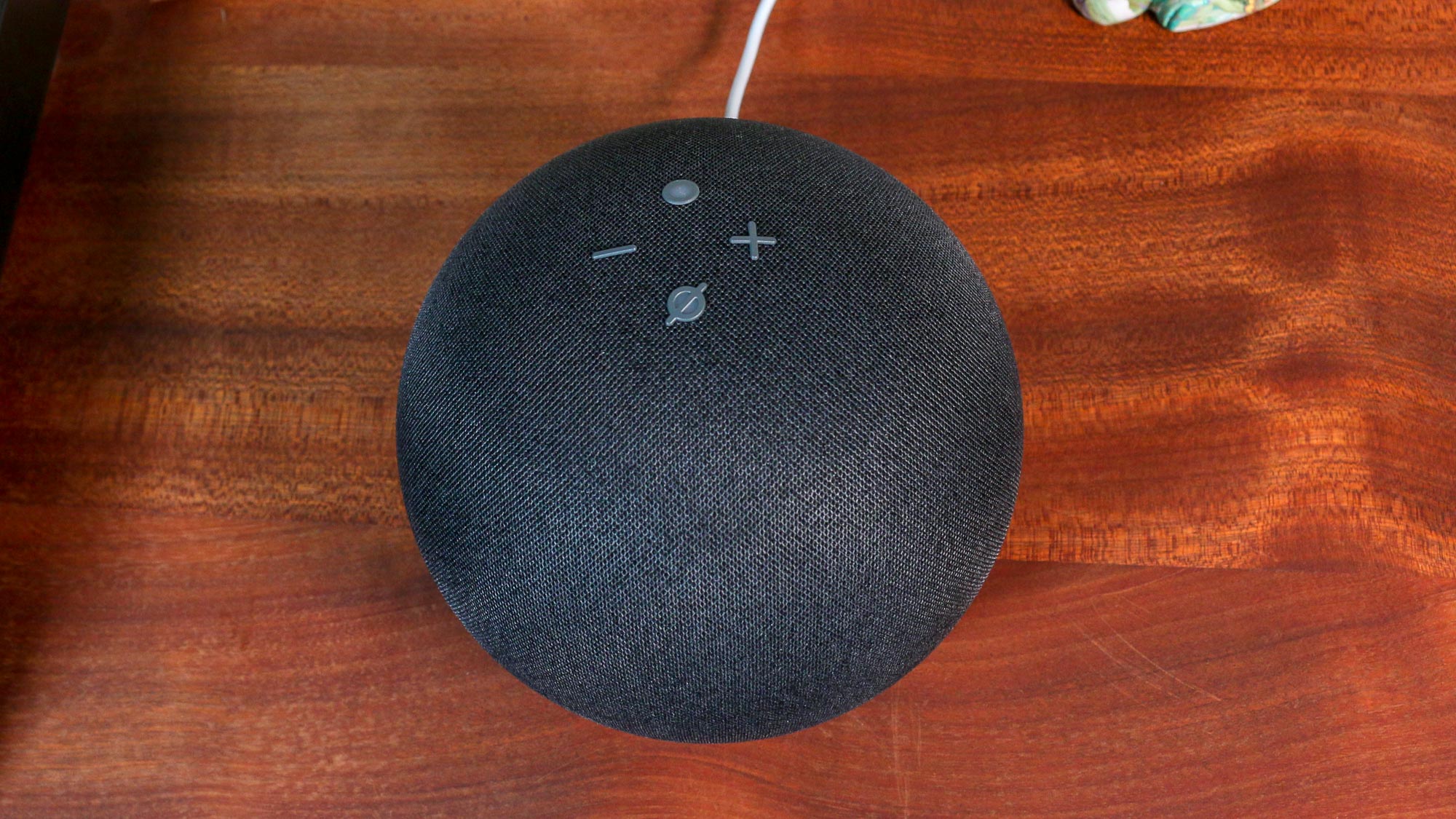
Just over the top are four buttons for volume, turning off the Echo’s mic, and summoning Alexa. I just wish that Amazon had added a clock to the front of the Echo, a la the Echo Dot with Clock. If you want to make a statement with your smart home speaker, you might as well make as big a statement as possible — for example, the Acer Halo Google Assistant speaker has a display and even colored LED lights along the bottom.
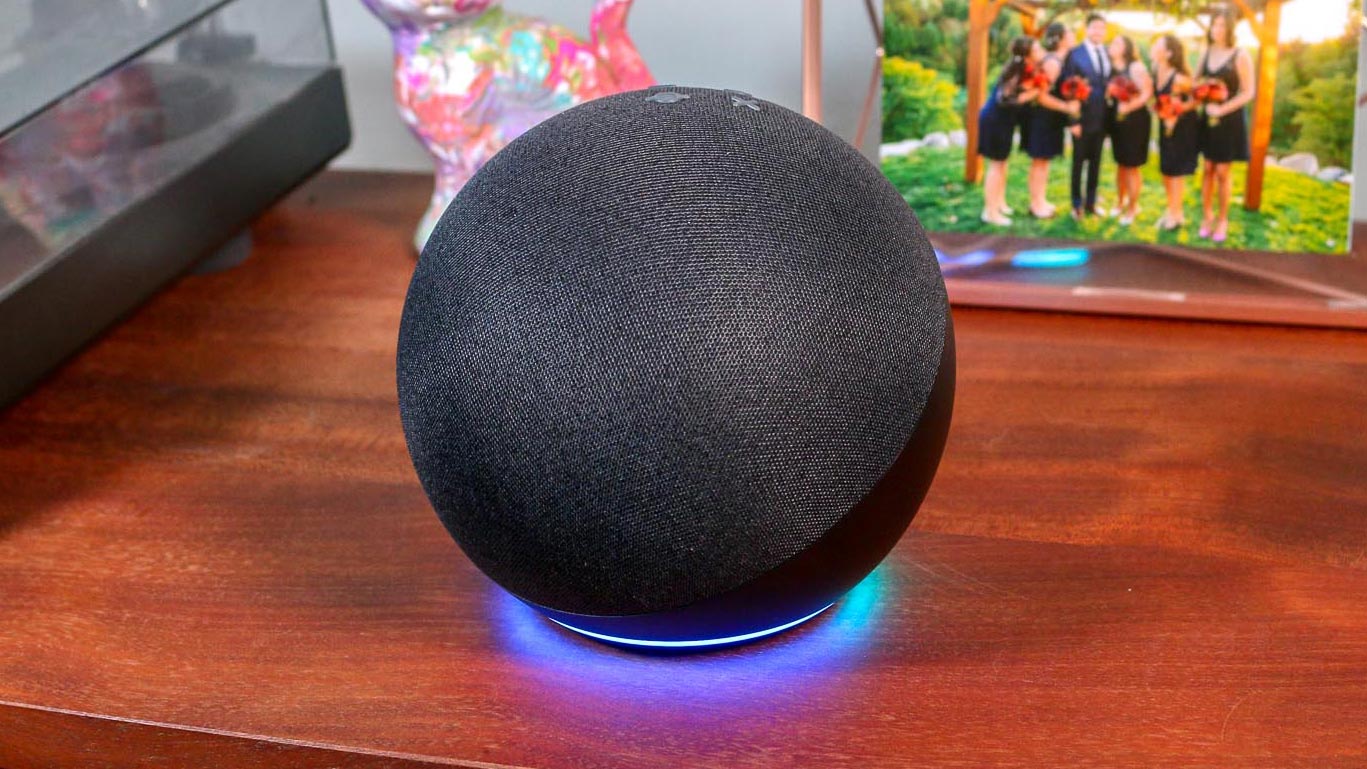
The Amazon Echo is the most well-rounded smart speaker, and I’m not just talking about its looks.
To that end, I also wish that there was a way to control the colors of the lights on the Echo. Now that they’ve been moved from the top to the bottom of the device, where they can reflect off a surface, it would be fun to have them change colors to the beat of the music you’re playing.
There is a third-party Night Light skill that causes the lights to pulse blue, but that’s about it.
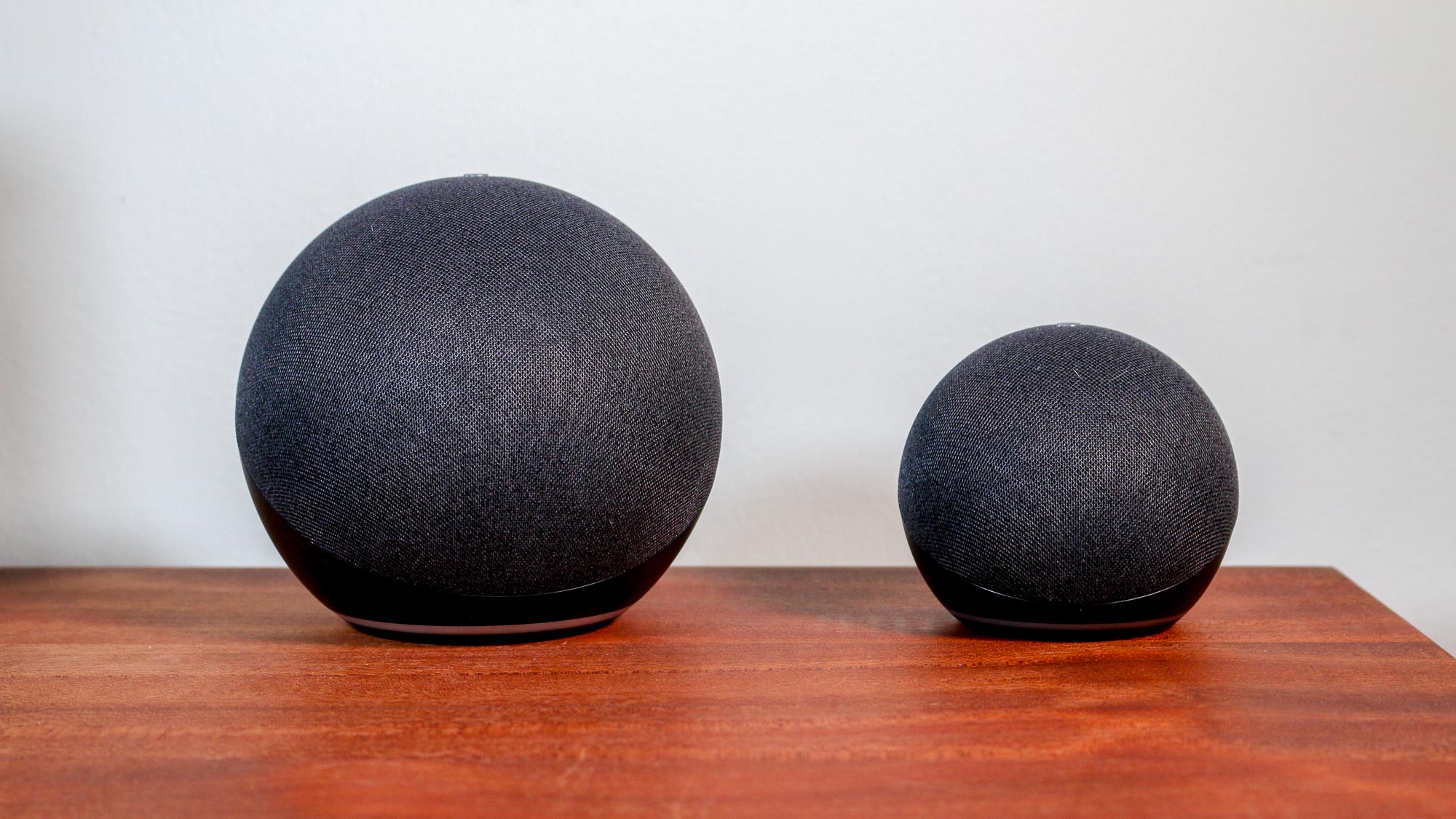
Measuring 5.7 inches in diameter, the Echo is larger than the Echo Dot and the Apple HomePod Mini, both of which are 3.9 inches in diameter. Despite having double the power requirement 30 Watts vs. 15 Watts) the Echo has the same size power brick as the smaller Dot.
Amazon Echo review: Audio performance and features
Inside the Echo is a 3-inch woofer that faces upward and two 0.8-inch tweeters that face forward. Like the Echo Studio, the Echo uses its array of six microphones to determine the acoustic properties of the room it’s in, and adjust the sound output accordingly. It’s a feature that’s also found on the Sonos One and the Apple HomePod, but not the HomePod mini.
I played a variety of songs on the Echo, from JoJo Siwa’s Boomerang (my child’s request) to Van Halen and the Hamilton soundtrack. Overall, the Echo sounded very good, with deep resonant bass and a general warmth to the songs.
However, when I played the same tracks on a Sonos One, the Sonos’ higher quality was immediately apparent. Vocals were not nearly as compressed, and everything just sounded crisper on the Sonos. That’s not to say that the Echo was bad, but if you prioritize audio above all else, it’s worth spending the bucks for the Sonos One.
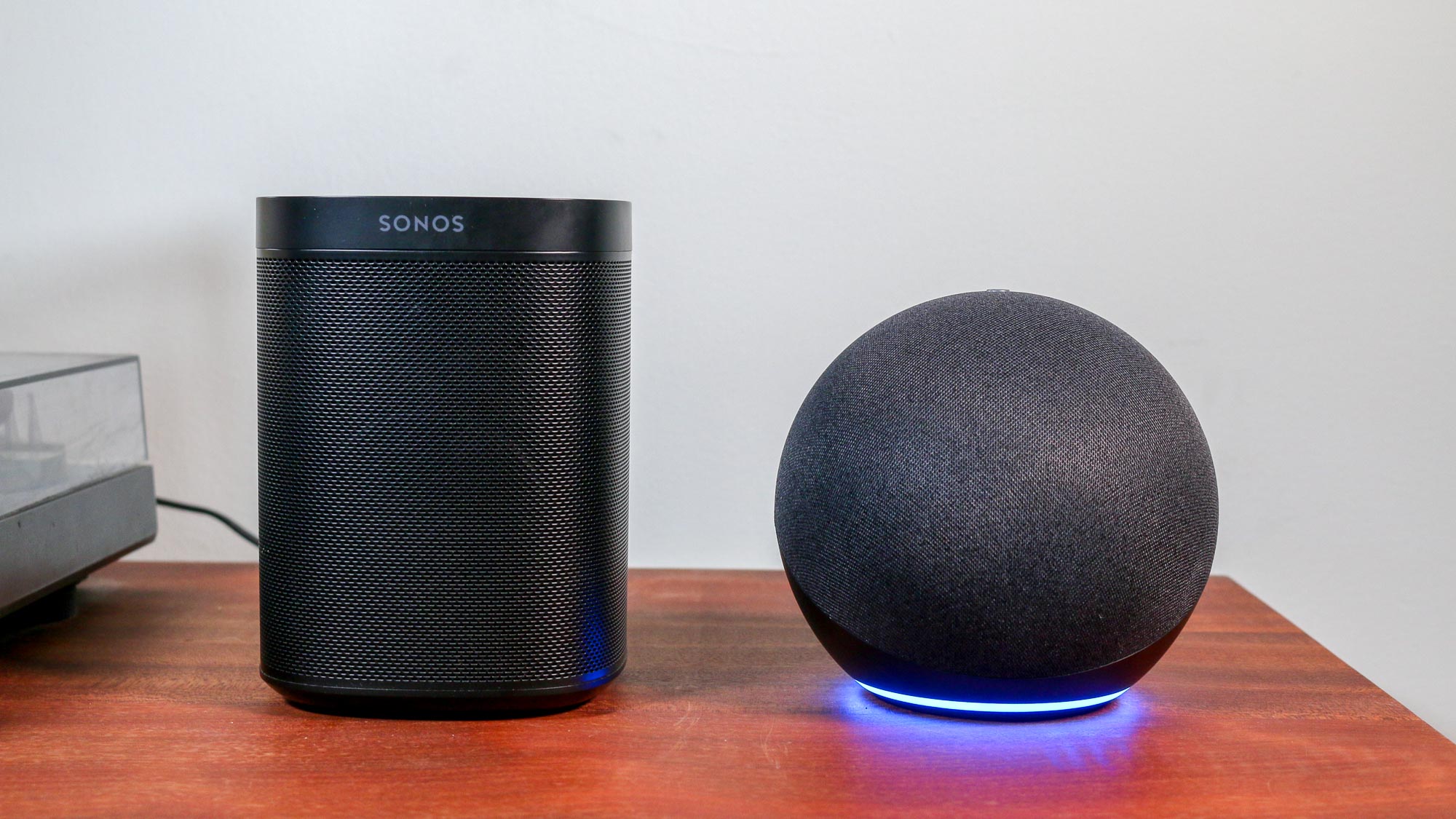
A 3.5mm jack on the rear of the Echo acts as both a line in and line out, so you can not only connect the Echo to an external speaker, but you can also connect audio sources directly to the Echo, just like with the Echo Studio. So, if you have an old-school record collection, you can plug your turntable directly into the Echo and jam out to your LPs. (You will need a pre-amp). One difference, though, is that in the Alexa app, you have to switch the Echo’s aux from line-out to line-in; the Echo Studio can do this automatically.
Also like the Studio, you can use the Echo as an audio output for Fire TV devices, so if you use one of those streaming sticks, this could be a good cheap alternative to purchasing a soundbar — especially considering that you can pair two Echos for stereo sound. However, the Echo lacks a TOS/optical line in.
More: Google Nest Audio vs. Amazon Echo (4th Gen)
Amazon Echo review: Alexa and smart home skills
Amazon has retired the Echo Plus, its smart speaker/smart home hub, and placed the Zigbee radio in that device into the new Echo. Zigbee allows you to connect compatible low-power smart home devices—think door and window sensors and lightbulbs—directly to the Echo, rather than needing a separate smart home hub. I connected a Zigbee door sensor to the Echo via the Alexa app in seconds.
Combined with Alexa Guard, this makes the Echo an ad hoc home security system; you can program your lights to turn on if a window sensor is opened, or have Alexa send you an alert if it hears your smoke detector or glass breaking. It’ll still be up to you to call the police or fire department, unless you also get a DIY home security system, a few of which work with Alexa Guard.
I also think that Alexa’s routines are far more comprehensive than what you can do with Google Assistant and HomePod. With Alexa, you can use the state of numerous third-party smart home devices to control the behavior of other smart home gadgets. For instance, I can create a routine to have a smart light turn on, music start playing, and have Alexa say something to me when the aforementioned door sensor is opened.
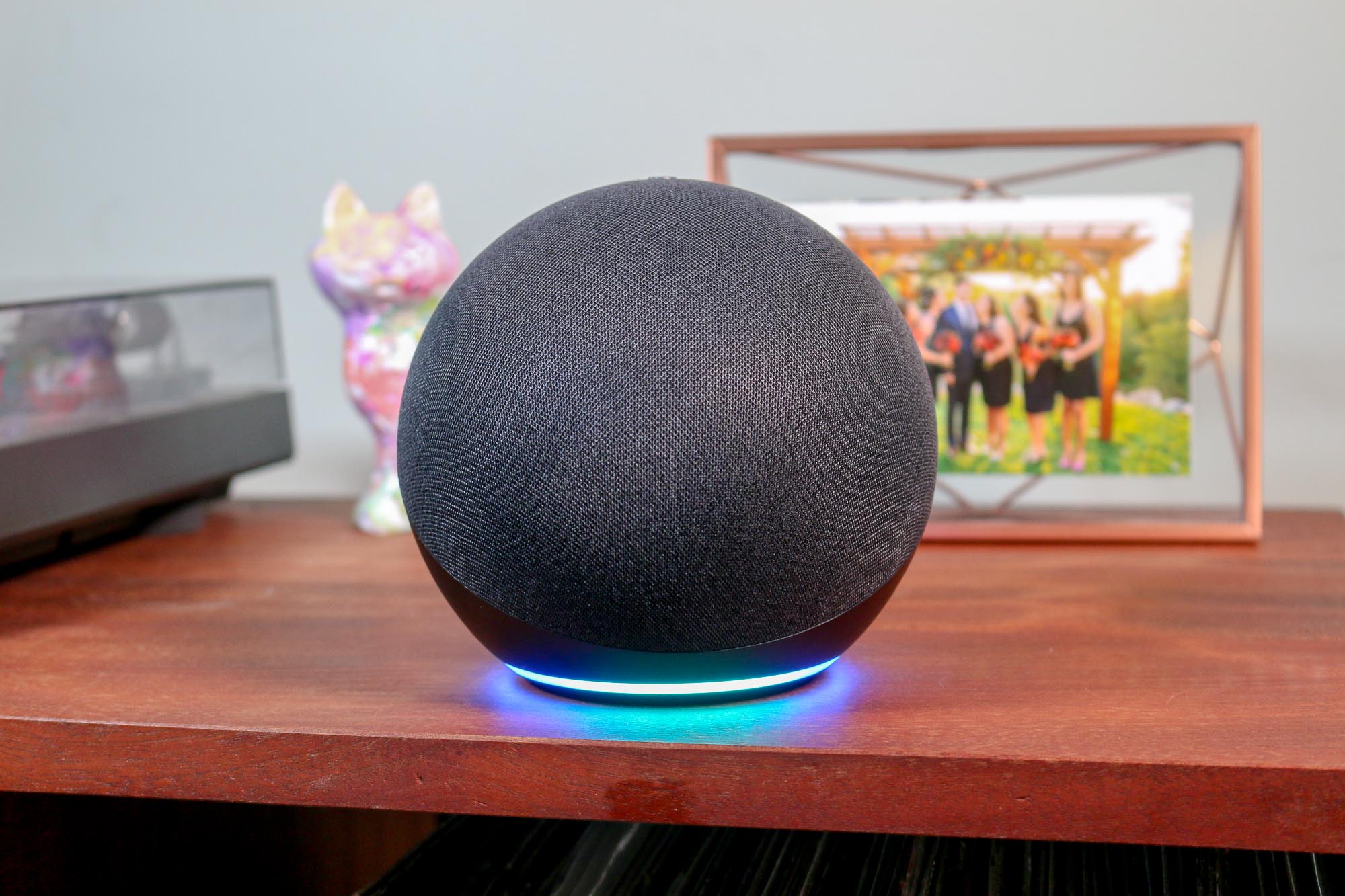
Another smart feature that will be enabled later this year is Amazon Sidewalk, a new long-range low-power, low-bandwidth protocol designed to create a more interconnected network throughout your entire neighborhood. So, if you forget your keys and Tile tracker at a friend’s house two blocks over, you’ll be able to more easily find them. Sidewalk has been in virtually every Alexa smart speaker since the second-generation Echo, and is in a few Ring smart lights, too. We’re curious to see how it works once it goes live.
A new low-power mode will reduce the Echo’s power consumption while it’s idle, with some caveats. The Echo won’t enter low-power mode if you linked a Spotify account to your Alexa account, if Alexa Guard is in Away mode, if there’s an active notification, if you have an external speaker plugged into the Echo, or if a smart home device is connected directly to the Echo via Bluetooth.
Another feature that's just arrived on the 4th gen Echo is motion sensing. This works similar to motion sensing on the Echo Show, but while those devices rely on a camera, the Echo uses "inaudible ultrasound" to sense when there's someone nearby.
This feature can be toggled on and off in the Alexa app, under the Motion Sensing option in your individual device's settings menu.
Once activated you'll be able to set up Alexa routines that activate or deactivate as you move around. It's similar to routines that already rely on motion sensors, but without the middle man.
Amazon Echo review: Verdict
The Amazon Echo is the most well-rounded smart speaker, and I’m not just talking about its looks. Yes, the spherical shape of the 4th-generation Amazon Echo makes it visually interesting, but the smart home networking tech and Amazon’s continual improvements to Alexa make the 2020 Echo one of the smart speakers for less than $100.
As I said earlier, if you want the best-sounding smart speaker, the Sonos One is the way to go. But if you’re looking for a smart speaker that will not just play tunes, but act as a central smart home hub, the 4th-generation Echo is an excellent choice.

Michael A. Prospero is the U.S. Editor-in-Chief for Tom’s Guide. He oversees all evergreen content and oversees the Homes, Smart Home, and Fitness/Wearables categories for the site. In his spare time, he also tests out the latest drones, electric scooters, and smart home gadgets, such as video doorbells. Before his tenure at Tom's Guide, he was the Reviews Editor for Laptop Magazine, a reporter at Fast Company, the Times of Trenton, and, many eons back, an intern at George magazine. He received his undergraduate degree from Boston College, where he worked on the campus newspaper The Heights, and then attended the Columbia University school of Journalism. When he’s not testing out the latest running watch, electric scooter, or skiing or training for a marathon, he’s probably using the latest sous vide machine, smoker, or pizza oven, to the delight — or chagrin — of his family.
